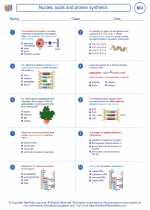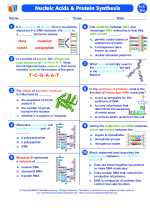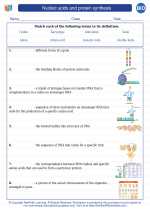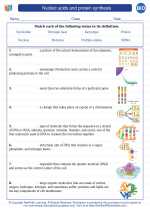Fossil Records
The fossil record is the collection of all the fossils that have been discovered on Earth. Fossils are the preserved remains or traces of ancient organisms, providing evidence of the history of life on Earth.
Types of Fossils
- Body Fossils: These are the actual remains of an organism, such as bones, teeth, shells, or leaves.
- Trace Fossils: These are evidence of an organism's activity, such as footprints, burrows, or coprolites (fossilized feces).
Formation of Fossils
Fossils are formed through a process called fossilization, which typically involves the following steps:
- Death of the Organism: The organism dies and its remains become buried in sediment, preventing decay and protecting them from physical and chemical destruction.
- Fossilization: Over time, the buried remains are gradually replaced by minerals, turning them into rock-like structures.
- Erosion and Discovery: Eventually, geological processes or human activity can expose the fossils, allowing them to be discovered and studied.
Uses of Fossil Records
The fossil record provides valuable information for various scientific fields, including:
- Evolutionary Biology: Fossils help scientists understand the history of life and the processes of evolution.
- Paleontology: Study of fossils allows researchers to reconstruct ancient environments, study ancient ecosystems, and identify extinct species.
- Geology: Fossils are used to date rocks and understand the Earth's geological history.
Fossil Record Limitations
While the fossil record is a rich source of information, it also has limitations, including:
- Biased Preservation: Certain types of organisms are more likely to fossilize, leading to an incomplete representation of past life forms.
- Missing Transitional Forms: Gaps in the fossil record make it challenging to document the complete evolutionary history of some groups of organisms.
- Destruction of Fossils: Geological processes and human activities can lead to the destruction of fossil-bearing rocks and the loss of important information.
Studying Fossil Records
To study the fossil record, researchers use various techniques, including:
- Fieldwork: Paleontologists search for and excavate fossils in different geological formations.
- Analysis: Fossils are carefully analyzed to determine their age, identity, and ecological significance.
- Comparative Anatomy: Comparing the structures of fossils with living organisms helps scientists understand evolutionary relationships.
- Chemical Analysis: Techniques such as radiometric dating and stable isotope analysis provide insights into the age and environment of fossilized remains.
Conclusion
The fossil record is a critical source of evidence for understanding the history of life on Earth and the processes of evolution. By studying fossils, scientists can reconstruct ancient ecosystems, trace the development of different species, and gain insights into the Earth's geological history.
[Fossil Records] Related Worksheets and Study Guides:
.◂Biology Worksheets and Study Guides High School. Nucleic acids and protein synthesis

 Worksheet/Answer key
Worksheet/Answer key
 Worksheet/Answer key
Worksheet/Answer key
 Worksheet/Answer key
Worksheet/Answer key
 Vocabulary/Answer key
Vocabulary/Answer key
 Vocabulary/Answer key
Vocabulary/Answer key
 Vocabulary/Answer key
Vocabulary/Answer key
